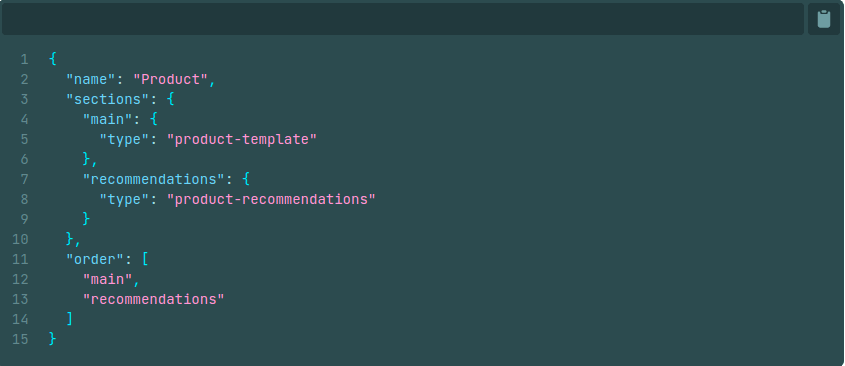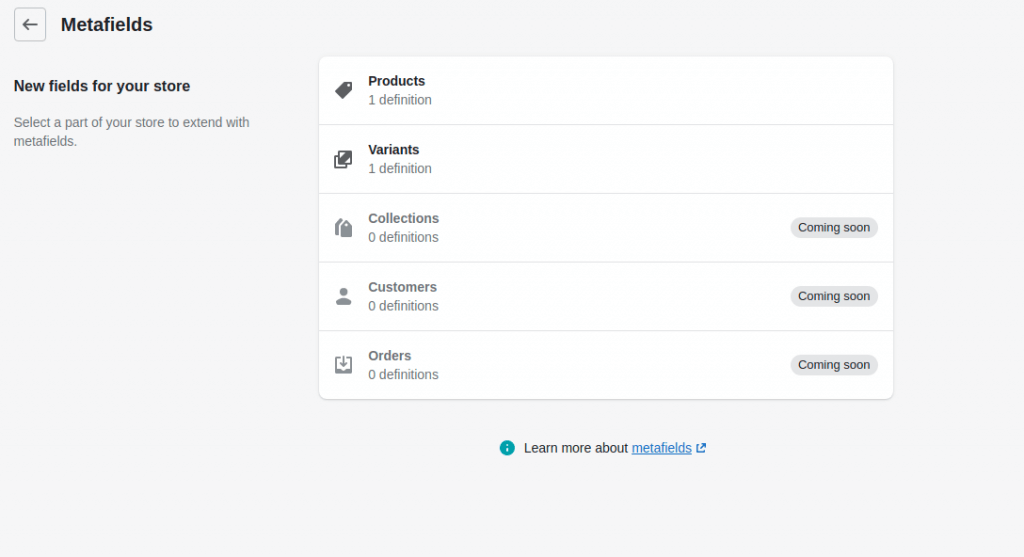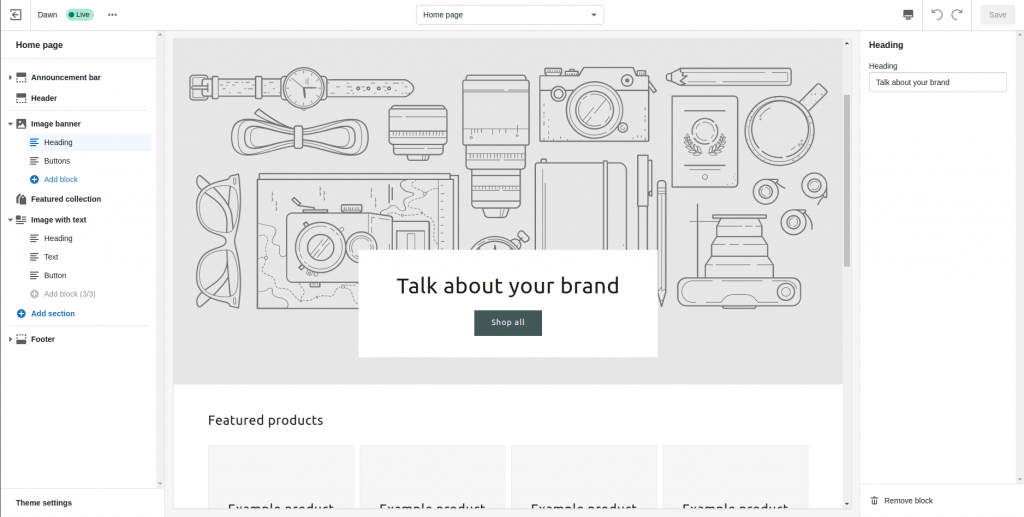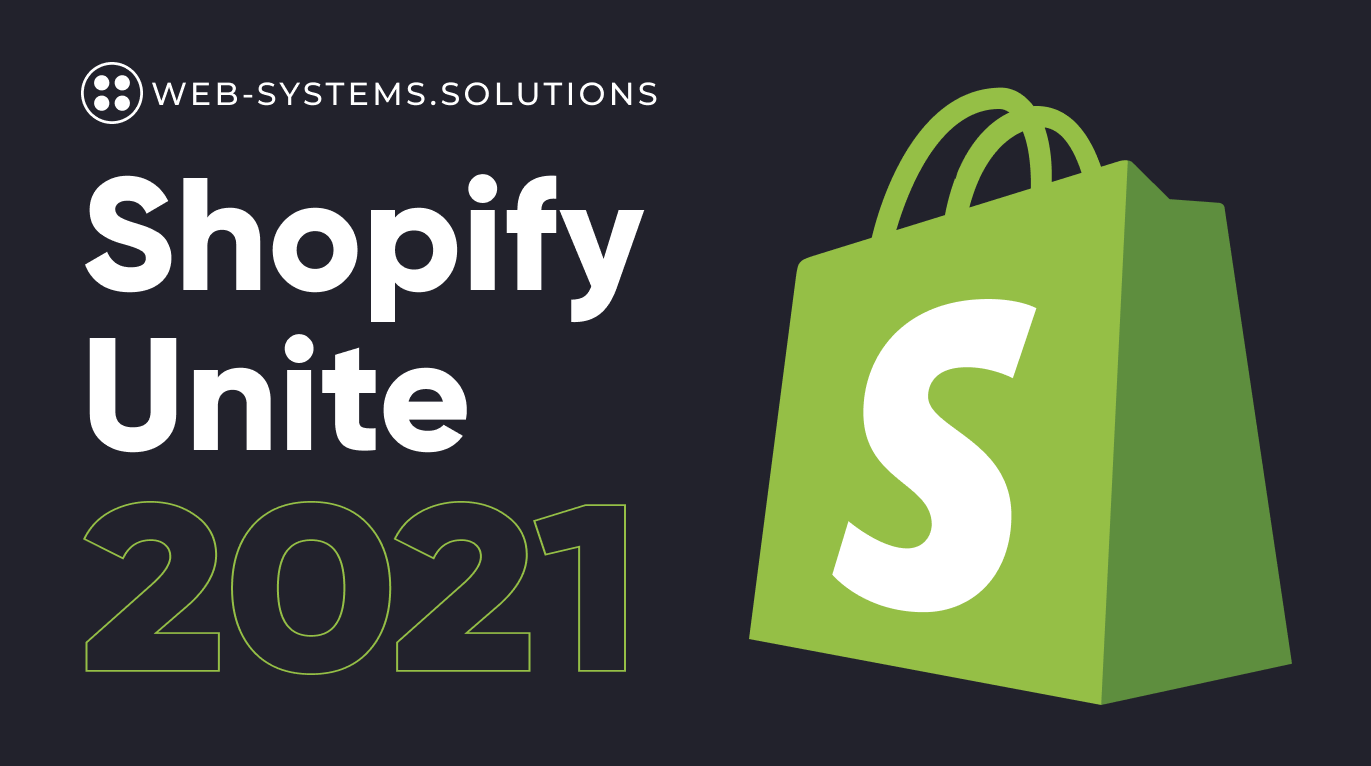At the end of June, Shopify Unite announced a series of changes which relate to the Shopify infrastructure, tools and development technologies. First of all, it brings us more tools and features for businesses in some Shopify Plus products, changes in the development of themes and applications, and one of the biggest updates is the introduction of Online Store 2.0.
What major updates did Shopify Unite 2021 announce?
- Zero percent of the first million dollar share in the Shopify App Store.
- Introducing of Online Store 2.0.
- Shopify Checkout extension with applications.
- Improvements in application development.
- Storefront API update.
We’ll go through every update.
Zero percent of the first million dollar share in the Shopify App Store.
This means that if you earn less than $ 1 million per year, you will not pay a percentage of the income from the Shopify App Store. If you earn more than 1 million, then you will pay a percentage only on the difference that will exceed 1 million and this percentage is 15% (previously it was 20%).
Introducing Online Store 2.0
One of the key changes to Shopify was the “Online Store 2.0” update. ( For more information about solutions on Shopify see here. ) It made significant changes to the creation and development of Shopify themes. Some changes simplify and improve the design and are quite logical, but some have not been made. Therefore we suggest to consider in more detail what kind of innovations have been introduced in Shopify Online Store 2.0.
- Modernized theme architecture.
Until now, all templates have been developed using the Liquid language. This means that adding new sections to a page without changing the template code was only possible for the main page, and if you want to add or remove a section, such as a collection page, you will have to edit the code. More customization! Sellers can now add new sections and sections to all pages, not just the main one, without editing the code. Each page type can now be created using a JSON template file that includes the sections of the page and also stores the settings data associated with any additional section. 
(example of the simplest JSON template structure)
- Improving metafields.
The updated thematic editor will allow sellers to add metafields and change their properties without using API or code. 
- New file selection tool.
Easy File Selector now supports file formats such as photos or PDFs. No hard coding in themes. For example, if sellers want a possibility to download a product warranty or product size chart directly from the product page, the file selection tool makes it easy. It has a simple user interface and inserts a product where the file metafields for their subject is located.
- New files API.
The new API files allow developers to download existing media content from settings / files to Shopify applications. Also, the applications have access to the admin area, including filling media metafields with content. This allows Shopify applications to use media space for files and images that are not directly related to the product, including images used in themes.
- Improving the theme editor.
Built-in modularity that allows to integrate and manage Shopify applications without touching the code, immediately through a common theme editor. 
(Custom Liquid design)
New development tools.
Also, one of the main changes was the update of developers tools. The most important thing is that they added integration with GitHub. (GitHub – a repository that contains all of IT projects and each file’s revision history). When programmers work with themes, they sometimes have problems with their copies and relevance. The customer sometimes makes the changes himself, and then the programmers need to manually add them to Git to update it. Integration with GitHub will avoid these problems. 
A new reference theme.
To demonstrate all the possibilities of Shopify Online Store 2.0 was created a new topic “Dawn”. This topic contains a number of all the updates that have been described above. Also, it is mobile-first and mobile-friendly, ultra-light in size, uses atomic components (for example, if necessary, only JavaScript) and is much faster in both desktop and mobile versions. 
Checkout app extensions.
For now, small changes to Shopify Checkout are possible for all sellers with the help of the editor, and larger changes are available for Shopify Plus accounts using Checkout.liquid. The new Checkout will allow:
- create your own ordering options,
- new payment extensions,
- a new set of extension points, APIs and interface components used to create applications for calculations,
- flexible solutions for calculations without the risk of hacking.
Additional enhancements that have been introduced to develop an online store on Shopify:
- Developer Console. You can immediately view all changes that have been made to the app locally without the need to publish it.
- Updated documentation. It has become more convenient to search for information.
- Improving the algorithm by which applications are displayed in the Shopify App Store.
- International pricing support to provide more flexibility in cross-border sales.
- Shopify CLI update. (CLI is a command line interface). It will allow you to deploy the theme code and change it locally. As well as use the command line to copy and publish themes.
The main principles of Shopify this year were productivity and scalability. That’s why on Shopify Unite 2021, updates and changes have focused on developer tools. They will greatly facilitate the process of creating an online store. And also, Shopify focused at the speed of launching an online store and getting started sales. And Shopify Online Store 2.0 has become a whole new way to scale your online business. Take it to the next level with Shopify. Ready to do it with you!




